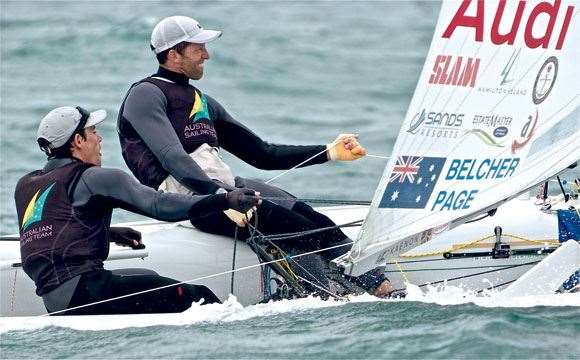Team chemistry’s one of those unpredictable sciences which can blow-up in the faces of even the biggest names in sport
 A boat in every port..
A boat in every port..Images: Courtesy Victor Kovalenko
A BOAT IN EVERY PORT
BELCHER: “We have a few competition yachts scattered throughout the world. We have one in Europe – where a lot of the World Cup events are held. We’ve had one shipped to Miami, we had another shipped to Perth and we have two
in Sydney.”
PAGE: “Yachts aren’t something you can fly around the world. Logistically it’s a tricky sport to handle; we find it’s easier to have equipment waiting for us around the place, so we can step straight into the boats when we arrive.”
WATER WORK
BELCHER: “At the moment, because we have sail designers here, we’re doing a lot of equipment and sail-testing. At other times we might be concentrating on skills/boat handling; things like manoeuvring around buoys, or boat-on-boat testing with another yacht to develop our race judgement.”
PAGE: “We’re currently spending hours and hours on what we call straight-lining, where we’ll just be on the one tack for sometimes up to an hour against our training partners, looking for an inch advantage while steering the boat. When we’re training overseas, we try and pick out 10-15 high-quality competitors to race us in short course practice. We’ll work on things like our starts, manoeuvring into position and utilising the wind to our advantage.”
TALENT VS TECHNOLOGY
BELCHER: “The good thing about 470s is that every boat is quite similar in make – the equipment onboard is very heavily regulated. The boats are made by licensed builders and the tolerances are very small. This stops someone having a massive speed and equipment advantage over someone else. There’s very little difference between one 470 boat and another.”
PAGE: “In 470 racing, results are 80-90 per cent dependent on the performance of the athlete. At Olympic level, sure, you must have adequate equipment with you, but the skill level will always shine through over some minor equipment advantage because the rules are so tight.”
Related Articles

Min Woo backs Minjee to win the medal that eluded him

Playing From The Tips Ep.75: Women's Olympics, Wyndham & more













